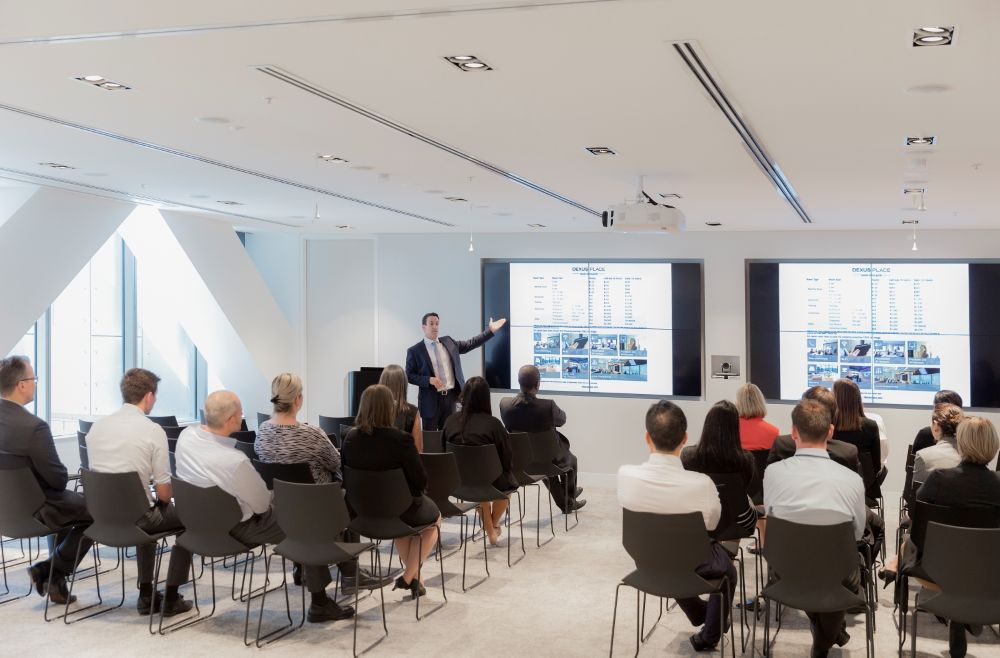The modern workplace is defined by movement. Everyone is busy, focused, and working hard. But imagine a rowing crew where every member is paddling furiously, but they’re all pulling in slightly different directions. The boat moves, but it circles inefficiently, burning energy without gaining ground.
This is the challenge facing many teams today: activity that masquerades itself as progress. Setting effective team goals is not just about delegating a list of tasks, they are shared, collective commitments that define a common destination. Mastering the art of goal setting or a team is the single, most powerful way to translate effort into measurable success, ensuring every pull of the oar moves the entire boat forward.
Why Some Team Goals Fail
Before we explore the solutions, it’s vital to understand why so many traditional goal-setting methods fail when applied to a team environment.
When managers adopt a top-down, command-and-control approach to goal assignment, they create a handful of dangerous pitfalls:
- Lack of Shared Ownership: Goals feel like mandates rather than mutual commitments. This leads to team members simply complying with the bare minimum instead of investing creative energy and passion.
- Individual Silos: Goals are often focused solely on individual performance metrics (e.g., "increase my personal sales by X%"). This neglects the reality of inter-dependency and actively discourages the kind of cross-functional support that high-performance teams thrive on.
- Vague Ambitions: Goals like "Improve customer service" or "Be more innovative" are impossible to track and, therefore, impossible to celebrate. If you can’t measure it, you can’t manage it.
Adapting SMART for Team Goals
The classic SMART framework (Specific, Measurable, Achievable, Relevant, Time-bound) is still the gold standard, when it comes to goal setting, but it should be tweaked when it comes to goal setting for a team.
When adapting SMART goals for a team, focus on collective visibility and shared accountability:
- Specific and Shared: Instead of defining what one person will do, define how success will be shared and measured across all relevant roles. For instance, "The marketing and product teams will launch the Beta feature by Q3 end."
- Measurable and Monitored: Define clear Key Performance Indicators (KPIs) that the whole team tracks in real-time. This means using shared dashboards and having open access to progress metrics, turning the goal into a team sport.
- Aligned and Achievable: Ensure the team's objective aligns directly with broader organisational goals. Every team member should be able to articulate the "why" behind the goal and believe it is realistic to achieve with the current resources.
- Relevant and Results-Oriented: The goal must drive meaningful impact and matter to every member, regardless of their immediate task.
- Time-Bound and Trackable: Set clear deadlines, but critically, establish regular, short check-in points (like bi-weekly goal syncs) to address roadblocks immediately, not just at the end of the quarter.
Actionable Team Goal Setting Activities
The best goals are born in the room, not handed down from the corner office. Using structured team goal setting activities transforms the process from a bureaucratic exercise into a collaborative planning session.
Here are three powerful activities to facilitate this process:
1. The Team SWOT Analysis (Future-Focus)
This exercise identifies where the team should focus its energy for the upcoming cycle:
- Strengths: What are we currently doing well? (e.g., fast deployment, excellent documentation).
- Weaknesses: Where do we consistently struggle? (e.g., communication lags, slow decision-making).
- Opportunities: Where can we gain an advantage? (e.g., new market segment, unused internal technology).
- Threats: What external factors could derail us? (e.g., competitor launches, upcoming regulation).
Outcome: By linking a Weakness to an Opportunity, you can identify the most urgent, high-impact area for your next goal.
2. Reverse Planning (Put The Finish Line First)
This activity ensures tactical alignment before work even begins:
- Start at the Outcome: Write the completed goal on the board (e.g., "New Customer Onboarding Flow is 100% live").
- Work Backward: As a team, identify the final three steps needed to hit that outcome. Then the three steps before that, and so on.
- The Dependency Check: This process forces the team to identify critical resources, dependencies, and potential bottlenecks required at each stage, ensuring no one starts working until the path is clear.
3. The Dependency Map (Collaboration Check)
Once the goal is broken down into major tasks, this activity builds immediate cross-silo accountability.
- Have team members map out which parts of their goal depend on a deliverable from a colleague or another team.
- By visually linking tasks, the team gains insight into the critical path and establishes mutual accountability. This ensures no single point of failure can secretly kill the goal.
Setting Aside Time for Collaboration Goals in the Workplace
It's easy to focus only on outcome goals (what we deliver). High-performing teams, however, dedicate time to setting operational goals. Goals that improve how they work together. These collaboration goals in the workplace are essential for long-term health and efficiency.
- Process Improvement Goals: Target specific inefficiencies.
- Example: "Reduce the average time for cross-departmental approval requests from 72 hours to 48 hours by the end of Q4."
- Example: "Automate the weekly reporting process to reduce manual data assembly time by 5 hours per week."
- Knowledge Sharing Goals: Build resilience and reduce key-person risk.
- Example: "Each team member will document and successfully train another colleague on one core technical skill this month."
- Example: "Complete the migration of all legacy project files into the new shared knowledge base by May 1st."
- Communication and Conflict Metrics: Improve team cohesion.
- Example: Implement a mandatory 15-minute "Lessons Learned" review after every major project to discuss what went right and what communication processes need refining for the next goal.
By setting explicit goals around collaboration goals in the workplace, you not only improve efficiency but also build a stronger, more resilient team.
How to Sustain Motivation for Team Goals
The final stage of effective goal management is continuous sustainment. Goals should be living documents, not dusty contracts locked away in a shared drive.
Emphasise continuous check-ins (ideally weekly or bi-weekly) rather than relying solely on quarterly reviews.
Be prepared to adapt goals when priorities or markets shift. After all, the goals are a guide, not a chain.
Most importantly, always recognise and celebrate the collective effort and milestones achieved, reinforcing that success is a team sport.
Move Your Team Forward as a Unit

In order to be successful at setting team goals, you must move the simple assignment of tasks. Effective goal setting for a team requires intentional structure, active participation from every member through team goal setting activities, and a genuine commitment to improving team dynamics by establishing collaboration goals in the workplace.
When you stop setting goals for your teams and start setting goals with them, you unlock a powerful engine for collective achievement and sustained high performance.
Collective commitment thrives in environments designed for connection, like the flexible workspaces at The Work Project, which are thoughtfully configured to foster fluid communication and high-level collaboration. Explore how The Work Project’s shared office solutions can support your team’s goals.






